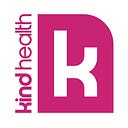Your Out-of-Pocket Healthcare Costs Need Not Be a Mystery
As deductibles continue to rise, health plan members are seeing the financial protection of their insurance kick in later and later in the year. Even after meeting their deductibles, members often still need to spend a thousand dollars or more before reaching out-of-pocket spending limits for the year.
People with serious health issues and grave diagnoses such as cancer, HIV, multiple sclerosis, or cystic fibrosis are frequently forced to plan ahead and make calculations to plan when they’ll be able to meet their deductibles. These issues can lead to significant debt due to unexpected healthcare costs.
It can be extremely frustrating and confusing to determine which bills you need to pay, or what specific costs you should expect when visiting a doctor’s office. If you’re faced with sickness or have technical, cultural, or language barriers– not to mention financial difficulties– navigating this maze of healthcare costs and mystery fees can seem impossible.
Understanding out-of-pocket expenses
The first step is to understand common healthcare expenses and clarify common misconceptions. What we know as an “out-of-pocket cost” refers to money that individuals are forced to spend when they receive medical care.
There are three types of out-of-pocket expenses that you should understand: copayments, deductibles, and coinsurance.
Copayment
A copayment, usually called a “copay,” is a fee that you must pay when visiting the doctor or even picking up prescription drugs at a pharmacy. Unlike the cost of the medical care or prescription itself, copays are relatively low, usually between $10 to $50, depending on each unique healthcare plan or the medical service.
Deductible
A deductible is a specific amount of money that you pay toward certain kinds of medical care covered by your insurance company. However, this fee must be paid before the insurance company can pay off the rest of the bill.
While some plans don’t have an annual deductible (rare), others may have a deductible up to $7,300 or more. (It’s important to note that copayments do not count toward your deductible, in the vast majority of cases.)
As an example, if your plan’s deductible is $4,000, you’ll have to pay 100% of your eligible health care expenses until your medical bills total $4,000. Once you’ve paid that much, you have “met the deductible.” From that point on, you share the cost of further medical bills by paying coinsurance.
(Note that in most circumstances, regular check-ups, women’s health visits, and other preventative screenings are covered by your insurance even if you haven’t yet met the deductible.)
Coinsurance
Coinsurance is your share of the costs of healthcare services. It’s usually a percentage of the amount charged for medical services. You start paying coinsurance after you’ve paid your plan’s deductible.
Unfortunately, coinsurance can be confusing, and people often become frustrated or angry when they realize they still have major expenses, even after meeting their full deductible for the year. For example, let’s say you’ve already paid bills totaling $4,000 and then you have a medical procedure that costs $1,000. A common coinsurance charge is 20% of the bill, so you still have to pay $200 toward the cost of the care.
Changes to expect in your insurance coverage renewal
To add to the potential for confusion, health insurance plans tend to change every year. Fortunately, members have a chance to review their health insurance coverage before renewing their membership in the plan for another year.
This renewal period is a great time to look closely at your plan and see if it meets what you expect your needs to be in the coming year. You will want to look at what services are covered, which ones may no longer be covered, the costs of those services, and which doctors, hospitals and other health care providers accept the insurance plan.
To get a a better idea of what sort of plan will best meet your needs in the next year, be sure to carefully read over the details of the new year’s health insurance plan, including:
- Monthly premiums
- Deductibles
- Copayments
- Out-of-pocket maximums
- Doctor network changes
- Types of preventative care that is covered
Along with specific health plan coverage, many insurance renewals also come with added bonuses including gym discounts, weight loss programs, and discounts on eyeglasses and contact lenses that can easily be added to your yearly coverage and help you save money.
If you’re already happy with your health insurance plan and don’t require any changes or updates, you can simply renew your plan and rest easy knowing that you’ll be covered. If not, you can shop for a new health insurance plan.
Because insurers’ plans, processes and deadlines vary, it’s important to check with your health insurance company for details on their renewal procedures.
Still need help navigating health insurance?
At KindHealth, we’re committed to making health insurance simple and saving customers time and money on all of their medical bills.
Our digital platform will tackle your questions and problems by providing efficient tools to ensure that you’re adequately covered by a plan that works for you without paying for things that you shouldn’t.
Built by health insurance experts and driven by sophisticated AI technology, KindHealth’s marketplace searches through more than 250 insurance carriers and healthcare.gov plans, and directs you to the least expensive plans that cover your unique healthcare needs.
KindHealth also has other ways to help you save money on healthcare. We know that nine out of 10 medical bills have overcharges, and that prescription prices can lack transparency and lead to overcharges, too. KindHealth’s platform can help, by offering prescription discount cards and medical bill negotiation services.
As thousands of Americans are renewing their health insurance plans, KindHealth helps everyone. You’ll get the health insurance you need, save on prescription medications, and reduce out-of-pocket expenses.
